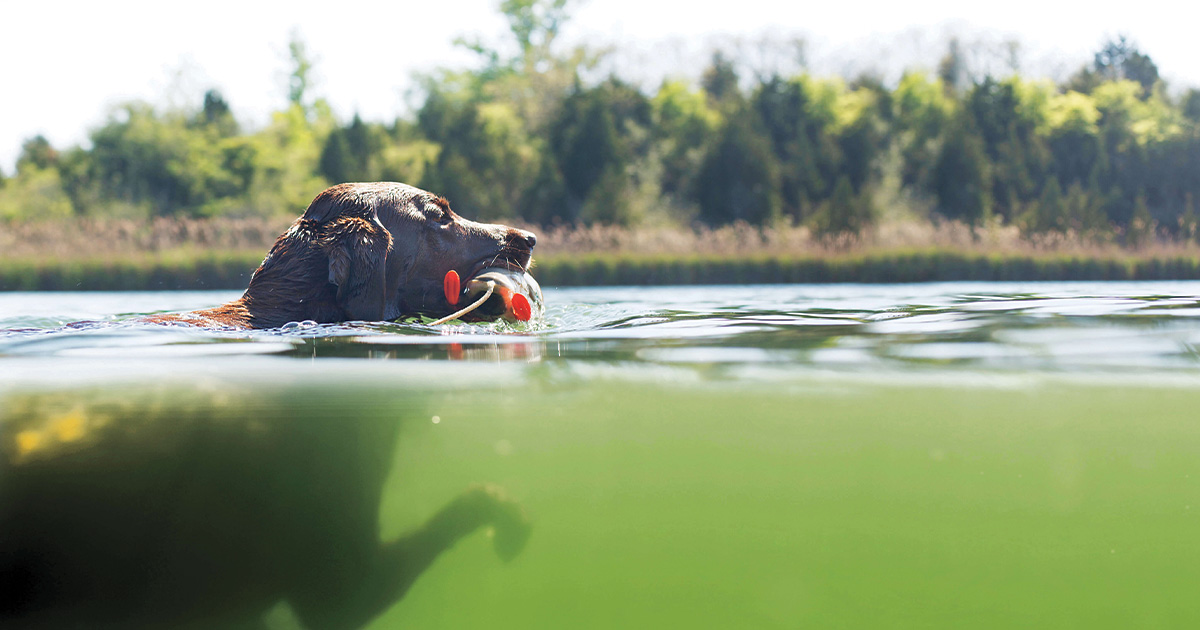Retrievers: The Road to Recovery
After a serious injury or illness, your retriever needs a solid rehabilitation plan
After a serious injury or illness, your retriever needs a solid rehabilitation plan


The time it takes for a hunting dog sidelined by illness or injury to get back in the game defines the term “small eternity.” If ever there were an instance when patience should be counseled, though, this is it. Dr. Jennell Appel, a canine sports medicine and rehabilitation specialist based in Thomasville, Georgia, says, “The most common mistake I see owners make is pushing too hard and trying to rush their dogs’ recovery. You have to remember that dogs often look like they’re better than they are."
“It’s important to understand that there’s a reason that your dog’s rehabilitation program is set up the way it is—and that you can never go wrong by sticking to the plan,” Appel says. While the specifics of that plan will vary depending on a host of factors, beginning with the nature and severity of the injury, the first and most important step is securing an accurate diagnosis. “That’s always number one,” she stresses. “It’s so important to have a proper diagnosis before we do any sort of rehabilitation. We can hurt a dog pretty easily by treating the wrong thing, or by treating the right thing in the wrong way.”
Obtaining an accurate diagnosis will typically require some sort of imaging technology, whether an X-ray, CT scan, or MRI. Appel notes that it’s important to work with a vet who will be proactive about getting you the answers you need to make informed decisions. “Not every veterinarian possesses the same expertise,” she explains. “Your vet should be willing to reach out to find someone who has those answers, which in our world usually means either a sports medicine veterinarian certified in rehabilitation or a board-certified surgeon.”
Once a diagnosis has been made, the rehabilitation program should address three main areas of concern. “Number one,” Appel says, “is to decrease pain and inflammation, whether it’s post-injury or post-surgery. Number two is to either maintain or increase range of motion in the affected joint or leg. And number three is to increase strength and proprioception [agility, balance, and coordination].”
Noting that this last concern typically entails specific exercises targeting the affected muscle groups, Appel explains, “That’s why there’s no cookie-cutter program for every injury. A dog that’s been compensating for pain over a period of months by shifting his weight may have developed other problems that need to be addressed. You have to look at the whole dog and not just focus on one thing.”
The best-case rehabilitation scenario is to develop a plan in concert with a facility staffed and equipped for that purpose. This might mean coming in two or three times a week for some sort of modal therapy—laser therapy, ultrasound, shock wave therapy, underwater treadmill, etc.—along with exercises administered by a professional. Then, at a certain point, the dog is discharged from in-house rehab and the owner is given an at-home plan, including exercises and expected milestones.
A key component of any successful rehabilitation program is pain control. “I’m a huge believer in maintaining pain control throughout the rehab process,” Appel says. “Muscles that are being pushed to become stronger are going to be sore, so it really hinders the process to withhold pain medication. One day of your dog not being able to exercise due to lameness, stiffness, or soreness will set him back three days in terms of his recovery.”
For dogs that have been sidelined due to illness (i.e., not by a sports medicine condition), Appel offers this rule of thumb for determining when it’s OK to hunt them again: “Start doing what you do to get your dog into condition prior to the hunting season—roading, swimming, doing marks, whatever—and evaluate his status. If your benchmark is 20 minutes of roading and he’s obviously gassed after 10 minutes, you know you have a ways to go. The last thing you want to do is jump right back in only to find out that your dog’s not ready. That’s just setting him up for failure, both physically and mentally.”
Remember: When in doubt, stick with the plan.
Ducks Unlimited uses cookies to enhance your browsing experience, optimize site functionality, analyze traffic, and deliver personalized advertising through third parties. By continuing to use this site, you agree to our use of cookies. View Privacy Policy